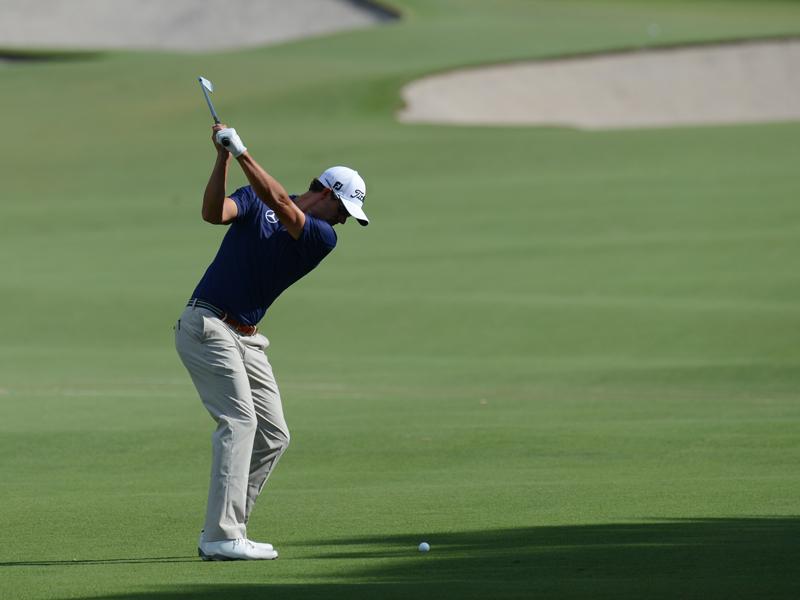Biomechanical Insights into the Golf Swing: Boosting Performance and Injury Prevention
The golf swing is a sophisticated, multi-faceted movement that demands exceptional coordination and athletic ability. A thorough understanding of its biomechanics is crucial for enhancing performance while minimizing injury risks. This involves a detailed examination of kinematics (joint movements) and kinetics (force generation) throughout the swing.
This analysis aids in pinpointing swing faults—variations from an ideal biomechanical pattern—that can impede performance and lead to injuries. By leveraging biomechanical knowledge, coaches and golfers can create data-driven training programs aimed at improving swing efficiency, maximizing club head speed, and alleviating undue stress on the body. Integrating these principles allows golfers to elevate their game, prolong their enjoyment of the sport, and avert serious injuries.
The Mechanics Behind the Golf Swing
The golf swing encompasses various physical principles that are essential for optimizing performance.
A fundamental aspect is how energy transfers from a golfer’s body to the club during swings. This transfer initiates with a downward motion; as players transition into their downswing, they shift weight from their back foot to their front foot while rotating their hips and shoulders to generate power.
Another critical element is the orientation of the clubface at impact—the part that contacts the ball—which significantly influences its trajectory. Typically angled slightly downward at impact, this positioning creates backspin that helps maintain lift during flight while controlling roll upon landing.
| Club Type | Loft Angle | Distance Achieved (yards) |
|---|---|---|
| Driver | 9°-12° | 250-300 yards |
| 3-Wood | 15°-18° | 200-250 yards |
| 5-Wood | 21°-24° | 170-200 yards |
Kinematic Analysis in Golf Swing Optimization
Kinematic Analysis in Golf Swing OptimizationUnderstanding kinematics—the study of motion—is vital for identifying inefficiencies within swings. It involves analyzing joint angles throughout different phases of movement which provides insights into timing, sequencing, and range of motion.
By breaking down movements into distinct segments—such as backswing or follow-through—coaches can assess each body’s contribution towards achieving an effective swing.
Common issues often arise due to misalignment or irregular patterns; for example excessive lateral spine movement may result in inconsistency or loss of power.
Kinematic Assessment Tools:
Various technologies enhance kinematic evaluations including motion capture systems or high-speed cameras which yield valuable data regarding joint angles along with velocities/forces involved during swings:
| Phase | Joint Angle | Velocity | Force |
|—|—|—|—|
| Backswing Start | Shoulder Flexion: 90° | Shoulder Rotation: 60°/s | Spine Torque: 400 Nm |
| Transition Downward | Hip Extension: 30° | Clubhead Speed: 80 m/s | Ground Reaction Force: 1200 N |
| Impact Moment | Wrist Flexion: 45° | Clubhead Velocity: 120 m/s | Ball Contact Force: 5000 N |
The Interaction Between Body Mechanics & Club Dynamics
The Interaction Between Body Mechanics & Club DynamicsThe golf swing represents an intricate interplay between bodily mechanics alongside club dynamics—a comprehensive understanding here proves essential for refining technique whilst maximizing overall effectiveness.
Main Interactions:
- Grip: The grip serves as contact point influencing both orientation along with power delivery through clubs .
- Stance: Stance refers positioning feet relative ball providing stability impacting path taken by clubs .
- Swing Plane: Imaginary plane where clubs move dictated by rotational aspects combined angle shaft forms.
Dynamics Affecting Body & Club System :
Several forces act upon this system during execution:
| Force Type Effect | ||||||||||||||
|---|---|---|---|---|---|---|---|---|---|---|---|---|---|---|
| < br />< br />
< br />< br /> < br />< br /> < br /> Aiming For Maximum Speed Through Biomechanics Efficiency
Achieving optimal speeds crucially impacts distance accuracy achieved on course . Biomechanics efficiency plays pivotal role generating maximum speeds whilst ensuring control consistency maintained . Through extensive research experts identified key principles enhancing speed :
| ||||||||||||||





